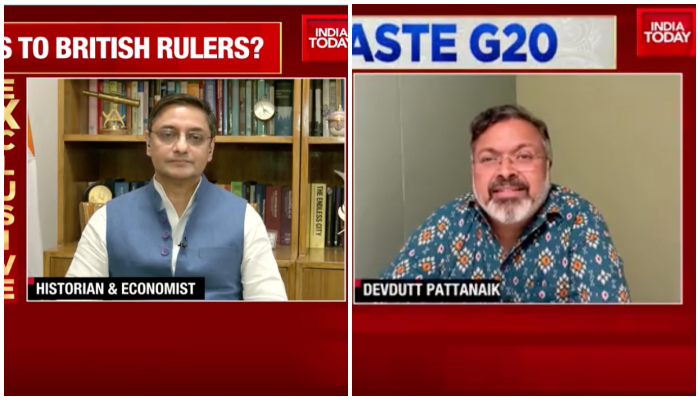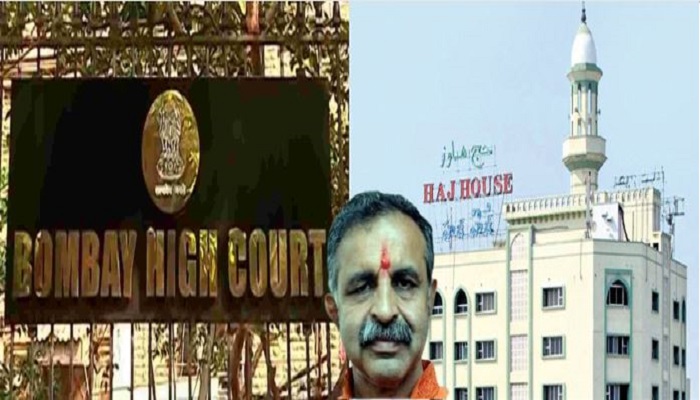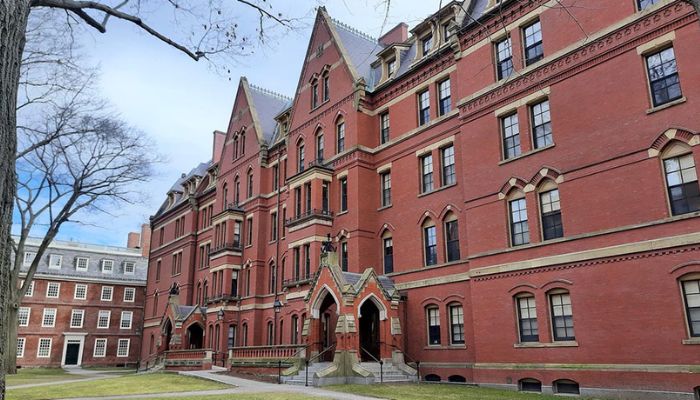Watch: ‘Bharat’ was appropriated by Brahmins, claims Devdutt Pattnaik, Sanjeev Sanyal debunks his claims

[ad_1]
Recently, there has been a media buzz over the claims that the Modi government at the center is planning to ‘change’ the official name of the country ‘from’ India ‘to’ Bharat. A lot of politicians and intellectuals have come up with their opinions on the rights and wrongs and in-betweens of the idea.
Ministers in the government have already clarified that there is no ambiguity about the names and as the constitution clearly mentions, they mean one and the same. The usage of the word ‘Bharat’ in some ceremonial communications, like the dinner invite for G20 delegates from the Rastrapati Bhavan had triggered the buzz, and many political voices, mostly the Left and Congress, have jumped into the outrage.
In discussion with India Today’s Rahul Kanwal, ‘mythologist’ Devdutt Pattanaik made some bizarre claims about the origin of the country’s name. He tried to relate it to the Left favorite topics of casteism, Brahminism, and intolerance. Rahul Kanwal then asked economist and author Sanjeev Sanyal about Devdutt Pattanaik’s claims. Sanjeev Sanyal, who has written best-selling books, ‘The Incredible History of India’s Geography’, and ‘The Ocean of Churn’, dispelled the usual Leftist tropes and meaningless claims that Devdutt Pattanaik was trying to force into the discussion around the country’s name.
When Rahul Kanwal asked how Pattanaik responds to the claims that ‘Bharat’ is of Bharatiya origin and ‘India’ is ‘foreign’, Pattnaik claimed the idea of singularity is ‘Middle Eastern ideology’ while the concept of plurality is Indian. So when we promote ‘one name’, we are drifting towards the Middle East. Like our many gods with many names, Indians should celebrate diversity and encourage many names.
Where did word ‘Bharat’ come from? Explains @devduttmyth, Mythologist and Author#NewsTrack #ITVideo | @rahulkanwal pic.twitter.com/Gm3FN78NZH
— IndiaToday (@IndiaToday) September 6, 2023
Rahul Kanwal then took the answer to Sanjeev Sanyal and asked him whether he agrees with the claim that picking one name means heading towards Middle Eastern sensibilities, and whether the names India and Bharat co-exist.
Sanjeev Sanyal said, “I don’t even understand what the debate is about. Bharat is a well-established name for India. It is right there in the Constitution. So is India. The Indian languages use ‘Bharat’ and we are all habituated to say India when communicating in English. There is nothing anywhere that says Bharat cannot be used. Using the word Bharat is not an ‘intrustion’ into the English language as some people are trying to claim.
The word ‘India’ has Indic origins, it is not ‘foreign’, says Pattanaik
Rahul Kanwal’s next question to Pattnaik was, “What is your understanding of the roots and origins of the name India?”
Pattanaik said, “The word India is not ‘foreign’ as some people are trying to claim. It comes from ‘Sindhu’, a river, that passes through India for several hundred kilometres. Arabs cannot pronounce ‘Sa’ so they started calling it ‘Hindhu’, Sapta Sindhu became Hapta Hindhu, Sindh Desha became Hindh, and 2500 years ago, a Persian king referred to India as ‘Hind’. The Greeks came to India, they could not say ‘Ha’ so they used ‘EE’, so instead of Hindu, they say Indu. Thus Sindh became Hindh, and then Ind-Indus.
Pattnaik even linked the word Indus to Indumati, Lord Ram’s grandmother. He claimed that the word originated from Sanskrit, from the Rigveda.
Rahul Kanwal then took the same question to Sanjeev Sanyal, asking him his opinion about the word India being ‘foreign’ and Bharat being ‘native’.
Sanjeev Sanyal cites the Battle of Ten Kings from Rigveda, the Bharata tribe, and their Ashwamedha Yagya
Sanyal, in his quintessential style, stuck to facts and evidence. Sanyal clarified that the word India is foreign with an Indian origin. The term Bharat, Sanyal explained has 2 origin stories. The older origin story is from the Rigveda where a tribe named Bharata lived in the Sapta Sindhu region.
In the early bronze age, a tribe named Bharata lived in the area that is now roughly Haryana, they used to call their homeland ‘Sapta Sindhu’. The Bharatas were attacked from the West, by a coalition of 10 other tribes. There was a great war on the banks of Ravi, then called Parushni. The Bharatas completely decimated the attacking tribes and emerged victorious. They also defeated another tribe named Bhedas around the banks of Yamuna. The Bharatas thus established the first ’empire’ in those times. Their chieftain, named Sudas, performed the first Ashwamedha Yagya to become the first Chakravartin Samrat of India. His symbol was the wheel. What we see in the later Mauryan symbol, the wheel in our flag, actually goes back to the early bronze age, to the Bharata tribe.
The Bharata tribe lived in the Sapta Sindhu. The Bharatas reached out to all the tribes around them and compiled the Vedas, adapting their gods, and their traditions, and assimilating their cultures, knowledge and belief systems in a grand ritual. All the gods and all the identities of the tribes were given a place in the form of the first 3 Vedas.
Bharat is a well established name for India: @sanjeevsanyal, Historian & Economist #NewsTrack #ITVideo | @rahulkanwal pic.twitter.com/B0DUvPJPlm
— IndiaToday (@IndiaToday) September 6, 2023
The very last chant of the Rigveda is a ‘contract’, the idea of assimilation and plurality that creates the idea of being ‘Bharatiya’. By the Iron Age, the whole landscape of the Indian subcontinent assimilated around a common identity, the idea of the Indian civilization. That last chant of the Rigveda, symbolic of our shared identity as a civilization, is commonly used even today.
गङ्गे च यमुने चैव गोदावरि सरस्वति।
नर्मदे सिन्धु कावेरि जलेऽस्मिन् संनिधिं कुरु॥
It mentions the seven rivers, the tributaries of the ancient Saraswati. The southern rivers of Godavari and Kaveri, find a mention here too, Sanyal explained.
“The Sapta Sindhu becomes the land of the Bharatiyas. In Persian texts, there is a phonetic shift. Sa becomes Ha, like in modern Assamese. Sindhu does not mean the Indus river in isolation, it links to the ancient Sapta Sindhu, the 7 rivers around which the Rigvedic civilization was built. The Hindu eventually becomes India, as Devdutt explained. However, the random extrapolation of Indumati is unrelated to the word India”, Sanyal narrated.
Devdutt Pattnaik tries to bring in casteism, Brahminism, untouchability, etc. randomly into his statements
Rahul Kanwal asks Pattanaik if he sees the emergence of the word Bharat in the context of this being the native name of our country.
Pattnaik then gives the Rigvedic origin of the word Bharat. He then says that the word is again mentioned in Mahabharat, which happens in the northern parts of India, the Kuru Panchala region that is the modern Delhi, Mathura etc. The first instance of the word ‘Bharata Varsha’ carved in stone is seen in Odisha’s Hati Gumpha (elephant caves), 2500 years ago, referring to only the Gangetic region, northern India, not the entire India.
Devdutt Pattnaik claims that Bharat is a name given by ‘Brahmins’
Pattnaik says that Bharat is a name given by Brahmins, referring to some parts of Northern India. He then adds that even ideas like Bharat Varsha, Arya Desha, Bharat, etc. are very ‘North Indian, Brahminical words’. There is another Bharat, in Jain traditions, the son of Rishabhdev, a Jain Tirthankara. Pattnaik then claims that he actually believes that the word Bharat came from Jain traditions but “we don’t value Jain traditions”. Jainism was very powerful at one time, but it was driven out. In Karnataka and Tamil Nadu etc, Bharata Chakravathi is known in a big way, but it is not the North Indian Bharat. The South Indian Bharat comes from Jain traditions.
So after he gave the Rigvedic origin of the word Bharat, Devdutt Pattanaik claimed North Indian Brahmins obliterated the idea of South Indian Bharat in his very next statement.
Sanjeev Sanyal busts the myth and explains how the claim of Brahminical dominance is meaningless
Rahul Kanwal then asks Sanjeev Sanyal his opinions on the North Indian Bharat vs. South Indian Bharat and Pattanaik’s claim that the idea of Bharat is a ‘Brahminical creation’ by the Brahmins in the way they saw history.
Sanyal states in a matter-of-fact tone that though some of the things said by Devdutt are correct, his interpretation is completely garbled, and even incorrect in some instances. Citing examples, Sanyal explains that Pattnaik’s claim that the battle of ten Kings happened in the Kurukshetra is entirely wrong. It happened on the banks of Parushni, that is Ravi, Western Punjab. Though the claim of Pauranik and Jain traditions are right, and there indeed was a Jain King Bharat, who was a Chakravartin Samrat, a descendant of Jain king Rishabhdeva, the founder of Jain traditions.
“India and Bharat, both are valid words and we should use them”: @sanjeevsanyal, Historian & Economist #NewsTrack #ITVideo | @rahulkanwal pic.twitter.com/BF1Np1RGlT
— IndiaToday (@IndiaToday) September 6, 2023
Sanyal then explains that Rishabhdeva’s son Nabhi also was a great conqueror and the land of Jambudweepa was also known as Nabhi Varsha. Sanyal added that it is meaningless to claim that there is a North India vs. South India or Brahminical vs. Jain idea behind this. By the time the Pauranas were written, South India had been more than comfortably a part of the wider identity of Indic civilization, he adds.
The oldest Tamil text, Tolkaippyam, the Tamil Grammar, the first enunciation of Tamil identity, is mentioned as being based firmly on the 4 Vedas, Sanyal adds. “When the Tamils proclaim that they are the people living between the Venkata hills in the North and Kumari hills in the South, they agree that their identity is based on the Vedas”, he explains.
Bharat word is imposed by Brahmins, India is older: claims Devdutt Pattanaik
Devdutt Pattnaik disagrees with Rahul, claiming the outsider Vs indic narrative comes from Chanakya Neeti of divide and rule, like Sam, Dam, Dand, and Bheda. He added that the word India, though called so by Greeks and Persians, did not originate from them, it comes from an Indian river. “It is the Brahmins who controlled the literature of our land. The word Aryan comes from Brahmins, but the Jains and Buddhists look at Aryans very differently”, he claims next.
Pattanaik then makes a complete flip and reverses his timeline, claiming that it can be argued that the Brahmins appropriated the word Bharat from the Jains, but the word Sindhu is a Vedic word. Even the idea of ‘internal’ and ‘external’ is Brahminical, because Brahmins claim that what is internal is pure, what is external is ‘Mlechha’, or impure. He then went ahead and claimed that suggesting that the word India is foreign is a very ‘Casteist, Brahminical’ mindset like Sita became ‘impure’ when she crosses the Laksham Rekha.
Launching a totally random tirade about casteism and untouchability, Pattanaik then went ahead to claim that we should just ‘allow’ plurality and discard the ideas of inside and outside, native and foreign because technically, ‘we are all genetically African’.
He added that politicians are more powerful so they control the narrative.
Sanyal debunks Pattanaik’s bizarre claims of Brahminical dominance
Responding to the tirade of Pattanaik, and claims of ‘Brahminical dominance’ asserting the word Bharat was appropriated from Jainism, Sanyal first pointed out to Rahul Kanwal that Pattnaik has just repeated the word Brahminical and Brahminism several times and has not answered the question at all.
The fact of the matter is the Vedic tradition predates that of Pauranic traditions and Jain traditions. The ideas of the Sapta Sindhu and Bharata tribes have been around since times older than these traditions. Coming to the Puranas, they say clearly that the people living south of the Himalayas and north of the ocean are called ‘Bharatiya’. “I don’t understand why this should be a garbled argument about Jains vs. Brahmins. All the Indic religions clearly understand and celebrate the fact that there is a civilization living between the Himalayas and the ocean that calls themselves Bharatiya.”
“The word India has origins in India agreed, but it is not an Indian word. By the time Sindhu became Hindu and it is started to be called India, it became a foreign word. It is not a bad word, everyone uses it, and I use it myself. Nowhere the government has said it cannot or should not be used”, Sanjeev Sanyal stated.
‘We change names when we change religion’: Pattanaik goes incoherent again
Pattnaik then claimed that we change names when we change religion or discard a belief system. “Changing names is a ‘conversion idea’. Politicians do it when they want to ‘convert’ from one identity to another”, he argued. Citing examples of China, Bhutan, Egypt, Germany etc, Pattanaik added that all great civilizations are called differently inside and outside and are comfortable with it. He then added that if Indians do not want to be called Indians (and rather call themselves Bharatiya), it means that they no longer want to be a great civilization and become monotheists. He then insinuated that choosing one name is a ‘Brahminical idea’. At the same time, Pattanaik claimed that this Brahminical idea is more like a Middle Eastern idea.
India is Bharat, and the constituent assembly agreed on this, The Constitution says it: Sanyal
Sanyal again asks what is the point of a debate when ‘India that is Bharat’ is accepted, enshrined, and acknowledged by the government and the people. “The Constitution of India begins by saying ‘India that is Bharat’, the Hindi version says ‘Bharat arthaat India’. So there is just no debate about one word being more important than the other. If everyone agrees that is alright to have multiple names, why is it that the usage of Bharat has rankled up the old elite. I think when the old elite was reading the constitution, they misread it as ‘India that WAS Bharat’. it is not so. The Constitution says ‘India that IS Bharat’, concludes Sanyal.
[ad_2]
Source link



